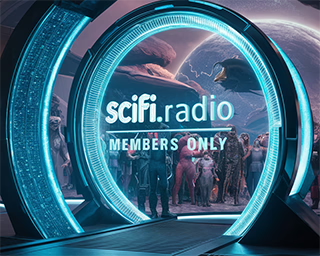A team of astronomers lead by Brian Welch at Johns Hopkins University announced Wednesday that they have discovered the most distant single star ever seen. And, while the star’s technical designation is WHL0137-LS, they gave it a much catchier fannish name: Earendel.

The team smashed the previous record for most distant star by tripling the distance from Earth. At 12.9 billion light years, this ancient star was formed close to the beginning of our universe.
Earendel is the farthest star ever observed. And the discovery is so unlikely that it seems like science fiction. A whole galaxy of billions of stars 12.9 billion light years away should just be a faint smudge, even to Hubble. But thanks to a gigantic cluster of galaxies perfectly aligned, the light has been gravitationally lensed thousands of times so we can actually see an individual star from the dawn of our universe.

Gravitational lensing was predicted by Albert Einstein, and is the phenomena of gravity bending, and even focusing beams of light. The effect is analogous to the rippled surface of a swimming pool creating patterns of bright light on the bottom of the pool. The ripples act as lenses and focus the sunlight.

Earendel was 4 billion light years from the young Milky Way at the time we observe, but we’re now 28 billion light years apart, thanks to the expansion of the universe.
Or we would be, if Earendel still existed, which it surely no longer does. Using relativity to reconstruct an image of the star, astronomers believe it was at least ten thousand to a million times brighter than our sun. That means it exhausted all of its fuel billions of years ago. The star that burns the brightest burns out the quickest. So the light we are seeing today is Ancient Light from events that happened long ago, and the star itself is long gone.
In this sense telescopes are a very real time machine. Looking further back into time the more distant the object being observed.
“We suspect it’s not the absolute first generation of stars,” NASA astronomer Michelle Thaller said. “We think that maybe this is one of the subsequent generations … maybe a couple tens of millions of years after star formation began [in the universe].”
(Earendel should not be confused with the oldest known star, nicknamed “Methuselah,” discovered by Hubble in 2013. Methuselah is much closer to Earth and burns far less brightly.)
In Old English, Earendel is a person’s name, but it also can mean “the morning star” or “the dawn.” In The Lord of the Rings, Eärendil is a half-elven character who travels the seas carrying a jewel, a “Silmaril,” called the morning star. Astronomers can be Tolkien fans too.
Follow-up studies have already been scheduled with the brand new Webb Space Telescope.
-30-
![]()
David Raiklen wrote, directed and scored his first film at age 9. He began studying keyboard and composing at age 5. He attended, then taught at UCLA, USC and CalArts. Among his teachers are John Williams and Mel Powel.
He has worked for Fox, Disney and Sprint. David has received numerous awards for his work, including the 2004 American Music Center Award. Dr. Raiklen has composed music and sound design for theater (Death and the Maiden), dance (Russian Ballet), television (Sing Me a Story), cell phone (Spacey Movie), museums (Museum of Tolerance), concert (Violin Sonata ), and film (Appalachian Trail).
His compositions have been performed at the Hollywood Bowl and the first Disney Hall. David Raiken is also host of a successful radio program, Classical Fan Club.











